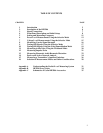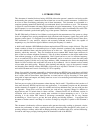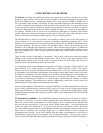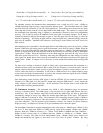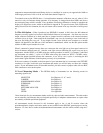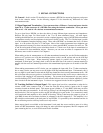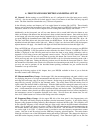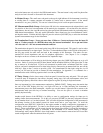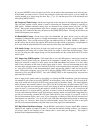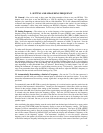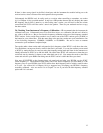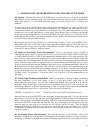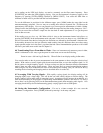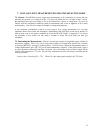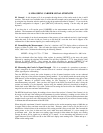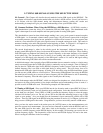10
If you press [OFFSET] on this sub panel you’ll first see the offset in the measurement level offset register.
If the number you want to enter is close to the present one in the data offset register, you can change the
existing number up or down using the arrow keys, [↑] or [↓] and then press one of the db buttons and
followed by [MEAS CONT].
4.8 Frequency/Tune Group - On the lower right side of the front panel is the frequency/tune sub panel.
This sub panel contains a knob, which is useful in fine-tuning the instrument’s frequency, especially to
SSB signals. Different automatic tuning steps are selected for the selected filters using the [AUTO]
button. Entry panel pre-programmed steps can be selected by pressing the frequency step button. The
actual step size is entered on the entry sub panel for the [FREQ STEP] button. Pressing the off button can
lock off the frequency tune function.
4.9 Bandwidth Group - On the lower right is the bandwidth sub panel, which is used to select the
instrument’s bandwidth that a power or voltage measurements are to be taken over. All models have 20Hz
and 400Hz filters. The A and B versions will have one additional filter of 1740Hz, 2000Hz or 3100Hz. A
and B versions may also have the optional WTD audio noise filter which is selected by a fourth button to
be in series with the wide third filter. For now select the widest filter your HP3586 has.
4.10 Audio Group - On the lower far right is the audio sub panel. This panel contains a small speaker
and headphone jack along with a volume control knob for output of audio from the SSB detector. Since
we won’t be using the audio output during our first measurements turn the volume knob full CCW to turn
off the sound.
4.11 Improving SSB Reception - This method that is not in the HP operator’s manual gets around the
problem of these signals being very distorted in the instrument’s speaker due to the fact the automatic
range level selection is acting as a AGC system for the SSB demodulator but because of its slow action
there is heavy distortion on the onset of audio signals such as words. I first set the instrument in the 10db
and auto range selection mode, press [10db] then [AUTO] on the frequency/entry sub panel if they aren’t
on. Next press [AUTO] on the measurement/entry panel and tune the speaker’s audio for best possible
audio. Then enter a frequency step of one Hz by pressing [FREQ STEP] on the entry panel and enter 1
followed by [Hz] and [MEAS CONT]. Now press [FREQ STEP] on the frequency/entry sub panel and
again tune for best audio.
Now to improve the speaker audio by preventing over loading the SSB demodulator, lock the instrument
into manual IF gain control by pressing [ENTRY] on the frequency/ entry sub panel. This will stop the IF
amps AGC action and fix the gain of the IF strip to that of the last automatic setting. This should partially
reduce distortion but to further reduce it, press [FULL SCALE] on the entry sub panel and use the [↑] key
to move the range full scale setting shown on the level display up until the modulation peaks on the analog
meter are near 1/3 scale and turn up the speaker’s volume if necessary. If you go too far and loose the
audio, then press [↓] to increase the IF’s gain but I’ve found 1/3 scale on the analog meter gives best audio.
You can experiment and find the best IF gain setting by entering smaller and larger limits using these keys
just like you would using a manual RF or IF gain control knob on your receiver. If you get UL or OL on
the level measurement display, don’t worry if your just tuning or listening to SSB, this only indicates level
measurements are inaccurate. Also to not have your SSB signal interrupted during tuning or monitoring,
turn off auto cal. However when doing level measurements, always have auto cal back on and press
[AUTO] on the measurement/entry sub panel when your doing signal level measurements.
4.12 Back Panel Oscillator Output – On the HP3586’s back panel is located a female BNC connector
labeled Fo that supplies an output of 0 dbm, 75 ohm from the internal tracking oscillator. Its frequency
will always equal to the frequency of the selected filter’s center band pass frequency. This output is
disabled in the wideband measuring mode.



